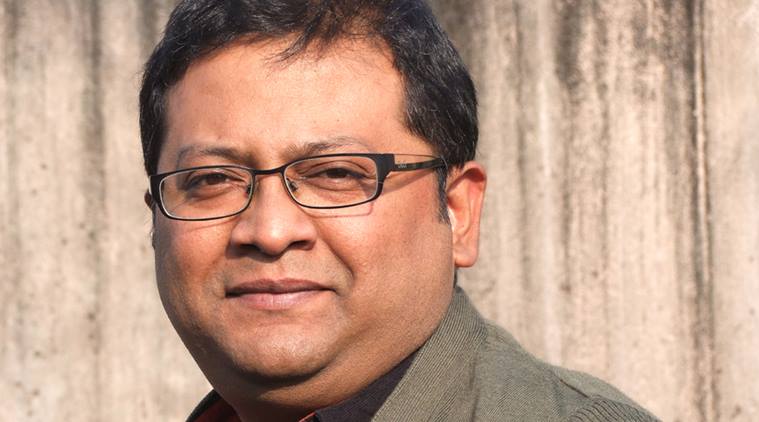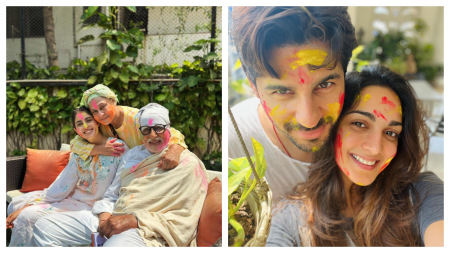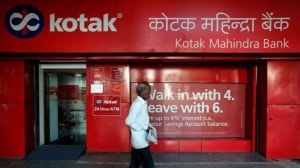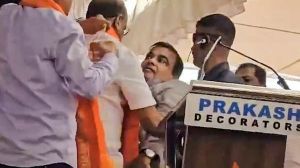- India
- International
The message that no means no should have been sent out much earlier in India: Pink director Aniruddha Roy Chowdhury
Director Aniruddha Roy Chowdhury's latest film, Pink, his first in Hindi, speaks on the issue of “consent” and why he finds the rise in crime against women “humiliating”.
 Director Aniruddha Roy Chowdhury’s latest film, Pink, his first in Hindi, speaks on the issue of “consent” and why he finds the rise in crime against women “humiliating”.
Director Aniruddha Roy Chowdhury’s latest film, Pink, his first in Hindi, speaks on the issue of “consent” and why he finds the rise in crime against women “humiliating”.
Director Aniruddha Roy Chowdhury’s stories of complex modern-day relationships in Anuranan (2006) and Antaheen (2008) fetched him National Film Awards for Best Feature Films in Bengali. He moved towards social commentary with his last film Buno Haans (2014). His latest film, Pink, his first in Hindi, speaks on the issue of “consent” and why he finds the rise in crime against women “humiliating”. Excerpts:
Initially, you wanted to make Pink in Bengali. How did it turn into your Bollywood debut?
The idea was to make a film that comments on moral policing. I hate the fact that women are judged on the basis of what they wear, where they hang out, or their career choices. When I mentioned the idea to Shoojit Sircar, he suggested that we should make it in Hindi. For the last few years, when you read newspapers in the morning or turn on the television, you feel dejected, angry and frustrated at incidents of atrocities against women. These emotions proved to be the trigger. Once, I had a fight during a television show where we were debating why a woman should go to a pub late in the night. On social media too, you come across many cases of public shaming of women for going to pubs.
You wanted to set the story in Kolkata. Why did you move it to Delhi?
Yes, initially it was supposed to be shot in Kolkata and Santiniketan. Shoojit suggested that we change it to Delhi. I am familiar with Delhi. I worked here for a while and I visit the city for work. Thanks to Pink, I rediscovered Delhi. In all my films, the city becomes a character. Though Delhi is beautiful and green, I find people there to be arrogant. Our story is universal, but, at times, the atmosphere of the place helps in telling it better.

Till some years ago, Kolkata was considered to be safe for women. That has changed.
The entire world is changing. Look at how terrorism and violence have changed today. A few days ago, I came to know that some people on a bike threw beer on a woman. I came across a video on Facebook which showed a girl in Haryana being molested. You can see the perpetrator’s smug face in it. We need more awareness and we need to question ourselves.
 Taapsee Pannu and Andrea Tariang. A still from Pink.
Taapsee Pannu and Andrea Tariang. A still from Pink.
Pink has an ensemble cast. How did you prepare them for their roles?
Before we started shooting, we discussed and debated the script with actors, Shoojit and others. I used to show the videos to the boys, share my thoughts with them. I asked them to react to them. The character of Andrea Tiriang, from Shillong, was not part of the script. I used to live in Lake Gardens in Kolkata, where a number of female students from the Northeast also resided. They wore shorts and would come to the neighbourhood tea stall to have tea and smoke. I noticed how people would to stare at them. The main objective of the film was to make that situation feel real to everybody.
In Jodie Foster’s Oscar-winning The Accused (1988), her character is gangraped at a bar. She was seen flirting with her attackers prior to the incident. The jury gives a verdict in her favour after it becomes clear that she had said “no” to the perpetrators. Did that film have any bearing on Pink?
I have seen Tapan Sinha’s Adalat O Ekti Meye (1982) in which Tanuja’s character seeks justice after being raped by four rich men, and Rajkumar Santoshi’s Damini (1993). Lady Gaga’s song, ’Til It Happens to You shook me up. But no, while making Pink, The Accused did not come to mind. However, the message that ‘no’ means ‘no’ should have been sent out much earlier in India.
When Amitabh Bachchan starts to point out rules that women should follow to remain safe, did you think there could be a risk of simplifying it too much for the audience?
No. He plays the role of a lawyer who suffers from bipolar disorder. This is evident in the way he conducts himself. His sarcasm comes out in the form of rules. This part has been beautifully created by Shoojit and our writer Ritesh Shah.
After watching the film, my daughter called me to say that I had also laid down rules for her. I admitted my mistakes to her. Another friend’s daughter called me to say that she is taking her father to watch the film.
From making commercials when did you make a transition to directing films?
I always wanted to make movies and used to watch a lot of films. When I was in Class III, I dragged my aunt to watch Do Anjaane (1976). When I was in Class X, a festival of Ingrid Bergman’s movies was organised at my school. That made me realise the power of cinema. After I graduated, I joined a film production company with the intention of learning the logistics. Later on, I set up a company with my wife Indrani and started making ads. We waited to make money and bought a camera to make our first movie, Anuranan (2006). There, too, I dealt with moral policing.
After Anuranan, you directed Antaheen (2008) and Aparajita Tumi (2012). Do you enjoy stories about relationships?
I guess, I do. My previous film, Buno Haans (2014), however, is a social thriller which talked about people from the lower economic strata of society who get into a slippery zone in their pursuit of security. In a way, Pink also talks about relationships — the ties that the girls share and the unspoken bond they have with Bachchan’s character.
For some years now, the state of Bengali films is being lamented in the press.
When we have around 250 cinema halls and 60 multiplexes, how can we recover our money? We need more screening spaces, especially in rural areas, investment and ideas. Even though we lack adequate infrastructure, the right collaboration and content can draw the audience and improve business. We have to be fearless about making movies — some will work, some won’t. But we have to keep trying and experimenting.
Currently, the Bengal film industry is going through a bad patch. Hopefully, we will come out of it. The same thing had happened in Marathi cinema. Bengali is the sixth most spoken language in India and if Bhojpuri and Tamil movies can earn so much money, why can’t we?
 Amitabh Bachchan in Pink.
Amitabh Bachchan in Pink.
How do you select your cast?
In Kolkata, the concept of a casting director is not very prevalent; you have to do everything on your own. I think of certain actors while developing a story and approach them. When I read Buno Haansh, a novel by Samaresh Majumdar on which my last film is based, I thought of Moon Moon Sen for the role of Madam. Similarly, its lead actor Dev fit the bill, as his character needed a certain naivete which the actor has. So, casting has been a very organic process in my films. For Pink, of course, we had a casting director.
Do you think Rituparno Ghosh made it easier for Bengali directors who were midway between art and mainstream to make their kind of films?
Yes, he is responsible for popularising the middle-of-the-road movies. He successfully bridged the gap between art and mainstream cinema. This effort had started earlier with Aparna Sen making Paroma (1984). Gautam Ghosh and Buddhadeb Dasgupta tried to do that as well. However, there was a lull after the mid-’80s. In the ’90s, Rituparno brought this trend back. Today, a film like Bhooter Bhabishyat (2012) is commercially successful. More directors are making these kinds of films.
Which Bengali movies have you enjoyed in the recent past?
I love Srijit Mukherji’s Jaatishwar (2014), Kaushik Ganguly’s Shobdo (2013), Indranil Roychowdhury’s Phoring (2013), Atanu Ghosh’s Angshumaner Chhobi (2009) and Sumon Ghosh’s Shyamal Uncle Turns Off the Lights (2012). I cried when I watched Kalpurush (2005) by Buddhadeb Dasgupta because I started missing my father.
Will you make more films in Hindi?
I have got some ideas for Hindi films but nothing is finalised yet. I would like to make Hindi movies as the reach would be greater. My next Bengali film, Cafe Kinara, is likely to take off soon. It’s a love story of sorts. The script is ready. I have approached Parambrata Chatterjee and Paoli Dam for the lead roles.
Click for more updates and latest Bollywood news along with Entertainment updates. Also get latest news and top headlines from India and around the world at The Indian Express.
Photos
Apr 24: Latest News
- 01
- 02
- 03
- 04
- 05









































